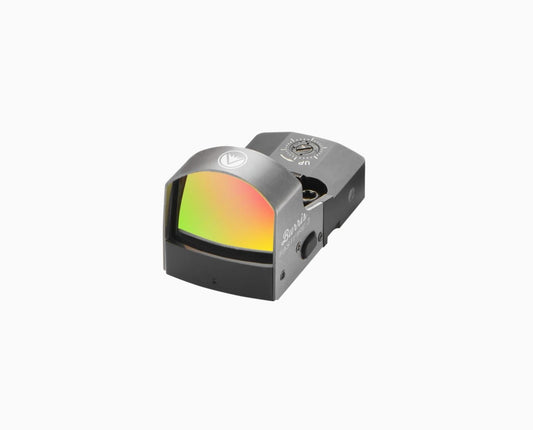

Burris Optics Fastfire III 3moa Dot Pic Mnt offers reliable performance for shooters seeking quick target acquisition. This red dot sight features a 3 MOA dot reticle that enhances visibility, particularly in low light situations, making it ideal for tactical applications, hunting, and competitive shooting. Engineered for durability, the Fastfire III withstands rugged environments while maintaining clear optics, allowing you to focus on your aim without distraction.
Lightweight at just 4.5 ounces, this sight has a compact design that ensures portability across various shooting scenarios. Installation is straightforward with its Picatinny mount compatibility, enabling you to set it up quickly on your firearm. With adjustable brightness settings, the Fastfire III adapts to changing light conditions, ensuring optimal visibility at all times.
Key Features:
- FAST TARGET ACQUISITION for immediate response in high-pressure situations.
- LOW LIGHT PERFORMANCE to spot targets even in the dimmest conditions.
- STURDY CONSTRUCTION ensures durability for all environments.
- EASY INSTALLATION with Picatinny mount compatibility for quick setup.
- ADJUSTABLE BRIGHTNESS for optimal visibility in varying light conditions.
- COMPACT DESIGN makes it lightweight and portable for any shooting scenario.
- RELIABLE BATTERY LIFE to keep your sight operational when you need it most.
- VERSATILE USAGE suitable for hunting, competition, and tactical applications.
Technical Specifications Table
| Specification | Details |
|---|---|
| Magnification | 1x |
| Dot Size | 3 MOA |
| Mount Type | Picatinny |
| Finish | Black |
| Weight | 4.5 ounces |
| Dimensions | 3.3" x 1.6" x 1.5" |
| Battery Life | Up to 5 years |
What’s in the Box?
- Burris Optics Fastfire III 3moa Dot Sight
- Picatinny Mount
- Lens Covers
- User Manual
Customer Reviews
"The Fastfire III has dramatically improved my quick shooting skills. The clarity is amazing!" - Jane D.
"Best red dot sight I've used for tactical shooting. It's reliable and very easy to use." - Mike T.
FAQ
1. How does the Burris Optics Fastfire III perform in low light? The Fastfire III excels in low light environments, providing a bright red dot that enhances target visibility even at dusk.
2. Is it easy to install on my firearm? Yes! The Fastfire III comes with a Picatinny mount, making installation quick and hassle-free.
3. What is the battery life like for the Fastfire III? This sight offers an impressive battery life of up to 5 years, ensuring you can rely on it for extended periods without needing frequent replacements.
4. Can I use it for competition shooting? Absolutely! Many competitive shooters prefer the Fastfire III for its quick target acquisition and lightweight design.
5. How does it compare to other red dot sights? The Burris Optics Fastfire III stands out with its combination of durability, performance in low light, and user-friendly design, making it a strong contender against other brands.
Similar Models
Looking for more exceptional optics? Discover our extensive Burris lineup, including the Burris XTR III for long-range precision and the Burris Signature HD for versatile shooting. Explore our full collection for exceptional optics tailored to your adventures.
You May Also Like
Here’s some of our most similar products people are buying. Click to discover trending style.






